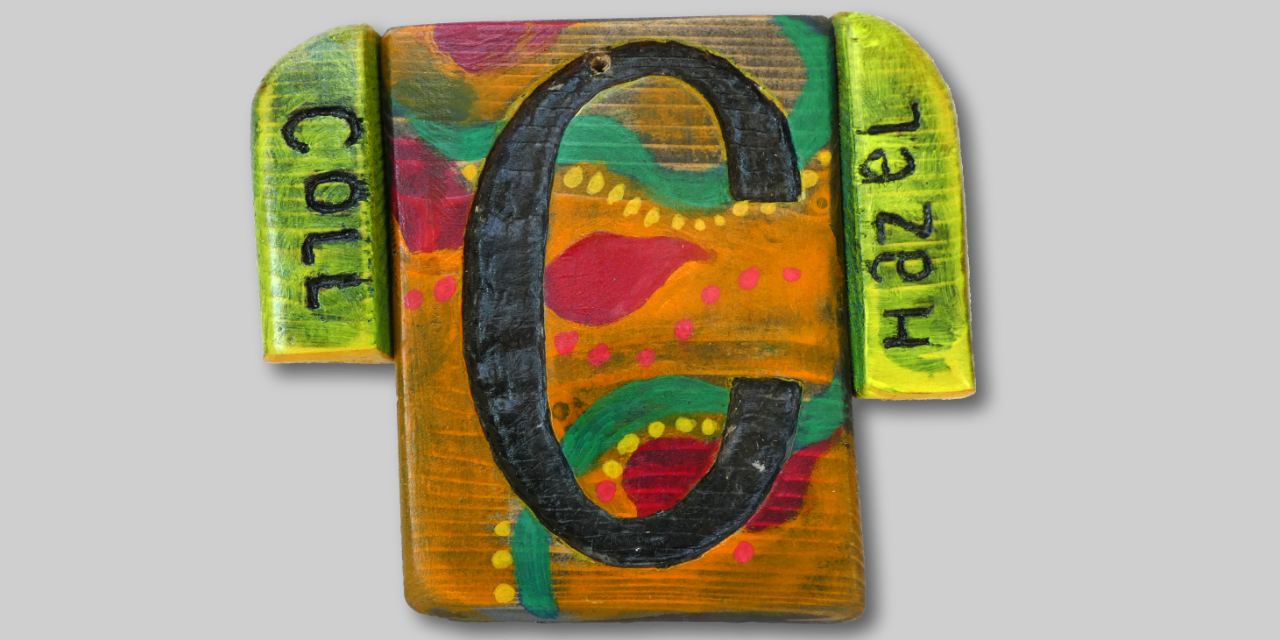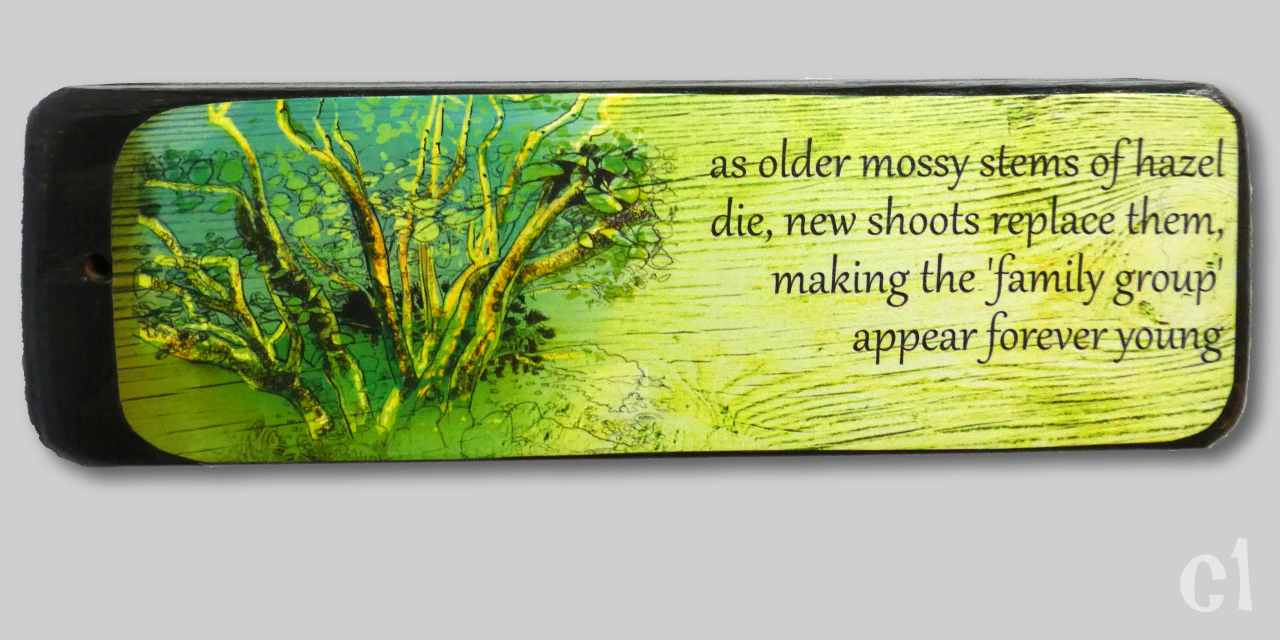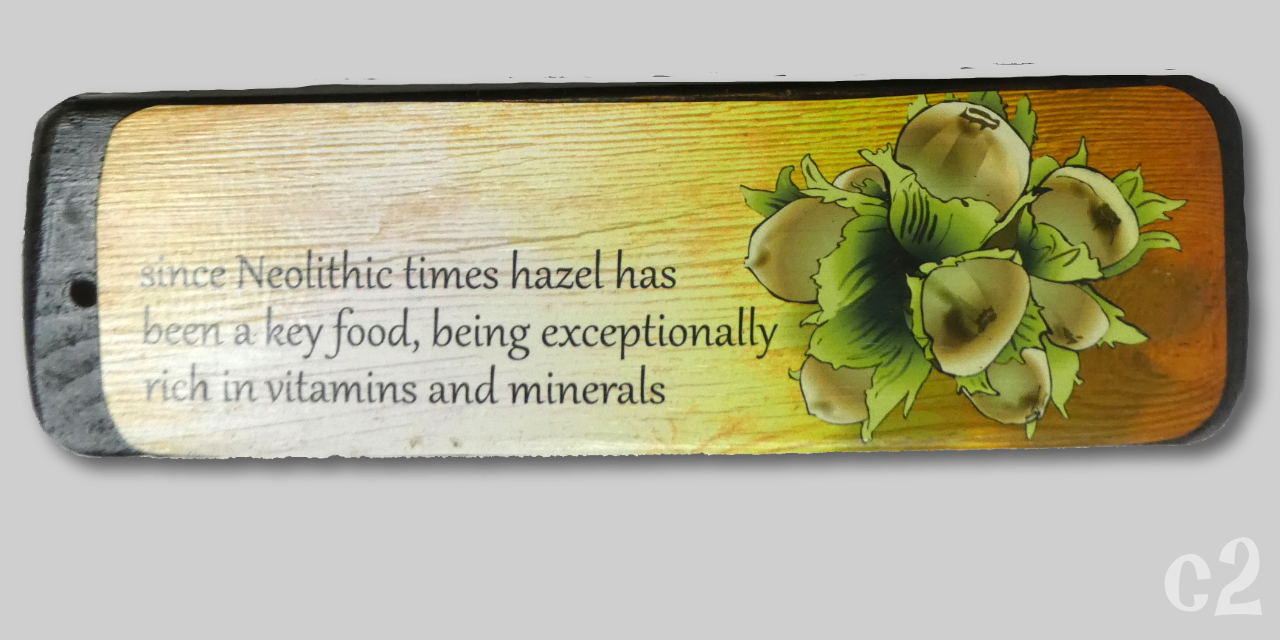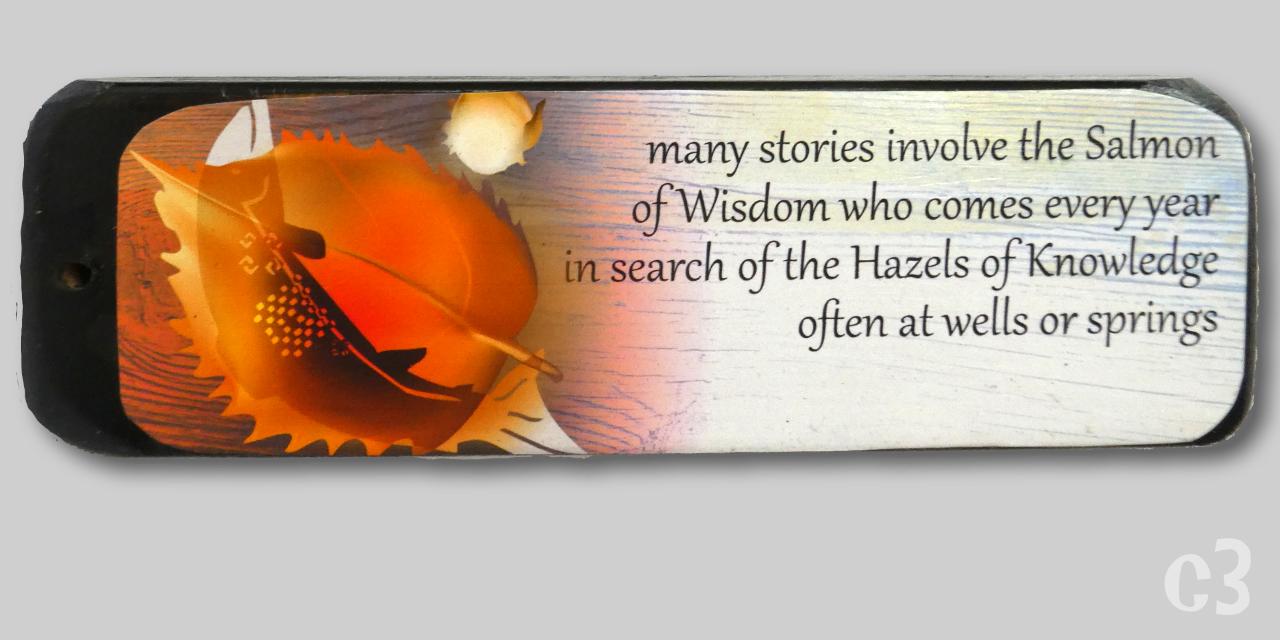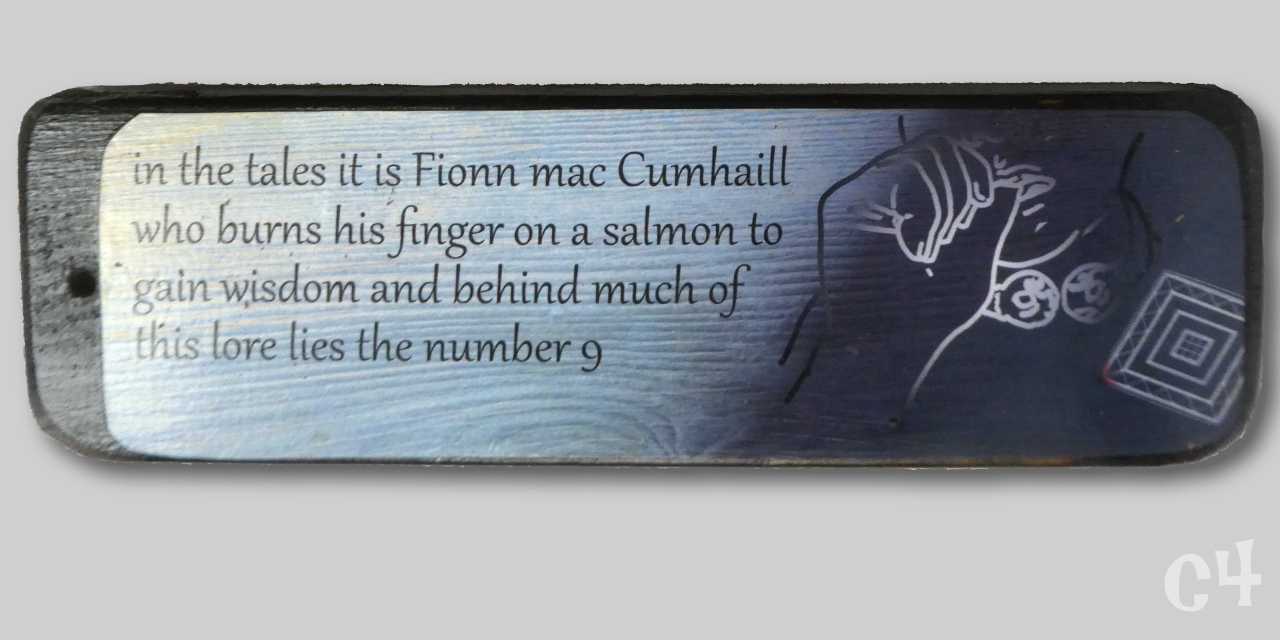
B L N F S H D T C M G P R A O U E I
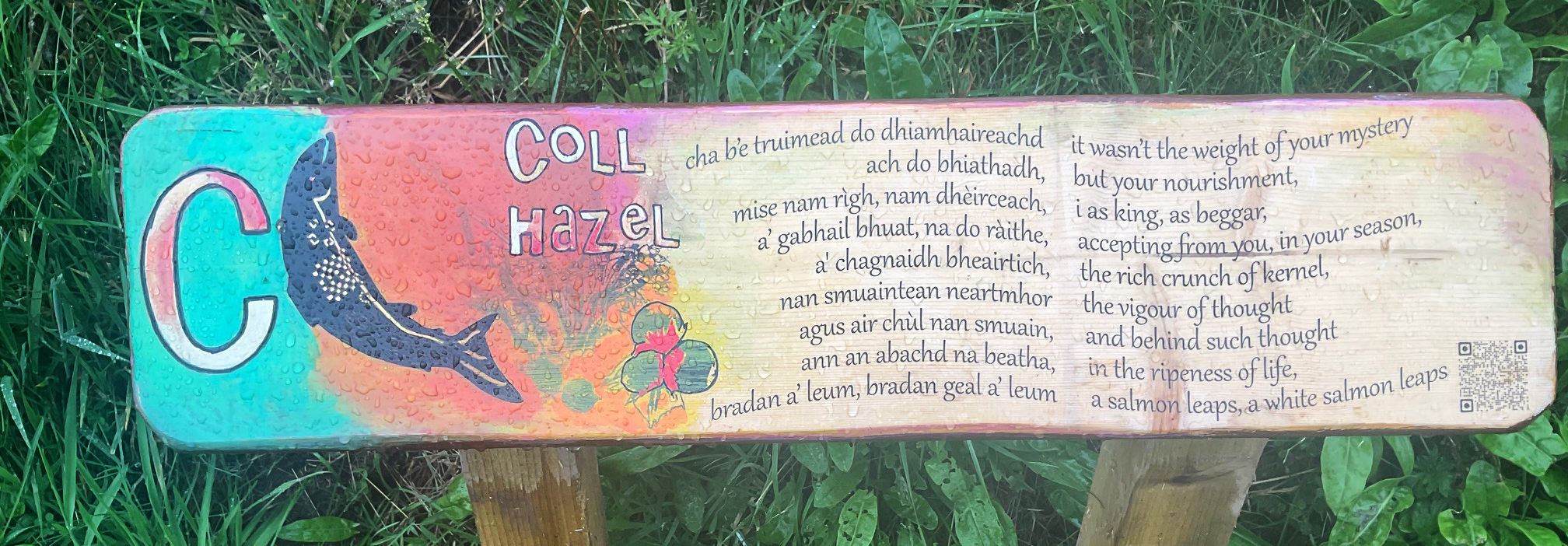
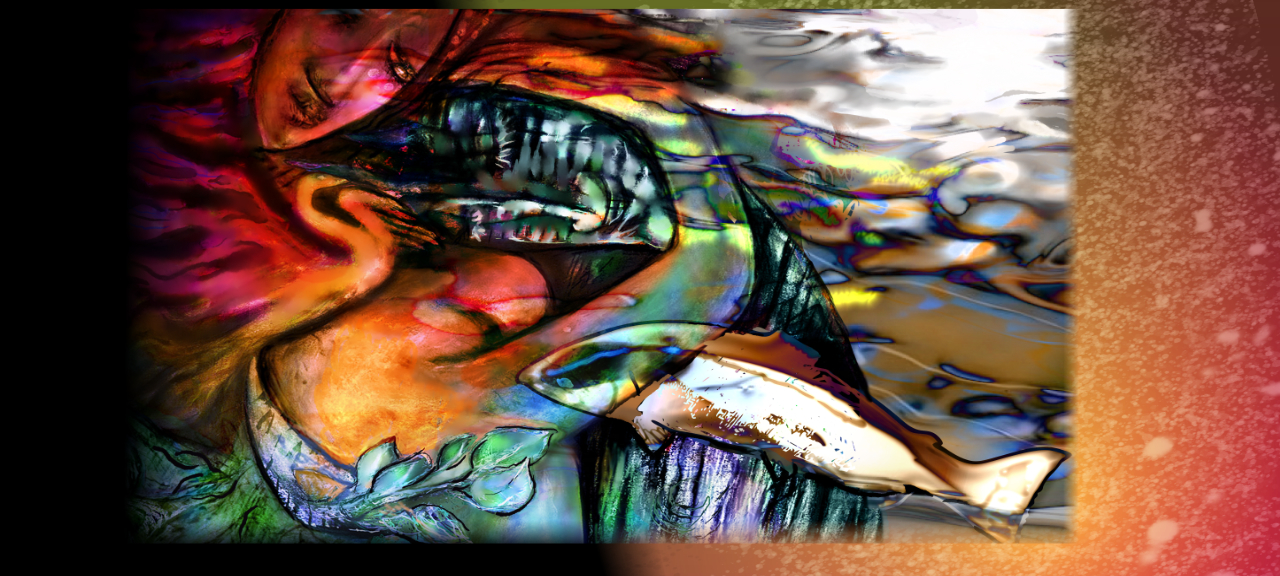
cha b’e truimead do dhiamhaireachd
ach do bhiathadh,
mise nam rìgh, nam dhèirceach,
a’ gabhail bhuat, na do ràithe,
a' chagnaidh bheairtich
nan smuaintean neartmhor
agus air chùl nan smuain,
ann an abachd na beatha,
bradan a’ leum,
bradan geal a’ leum,
uchd làn de
shìol beò na h-innleachd
it wasn’t the weight of your mystery
but your nourishment,
i as king, as beggar,
accepting from you, in your season,
the rich crunch of kernel,
the vigour of thought
and behind such thought
in the ripeness of life,
a salmon leaps,
a white salmon leaps,
its belly fat with
the living seed of invention
Hazel nuts have been found in all human settlements, right back to the Neolithic period. This is less surprising when it is appreciated the nuts contain vitamins A, B, C as well as potassium calcium, phosphorous, magnesium, iron and protein and a high per cent of fatty oil. They can be eaten raw as well as roasted and appear in countless recipes.

The hazel tree takes nine years to mature and flower and although its stems die after thirty to fifty years, these are replaced by new shoots, and it is this which makes hazel appear unusually young, even though its root or stump can be hundreds of years old. Catkins appear first, before the leaves, and the female flowers a month later, with scarlet stigmas.


In hotter countries, almond can occasionally be substitute for hazel. Medicinally, witch hazel is excellent for healing skin irritations. Leaves and bark are ancient remedies for heart problems and prevent dilation of blood vessels. Hazel belongs to the birch family, Betulaceae (coryllus avellana)
Often grown in groves, the bark is smooth with lightly 'blistered' nodes. Several species of moth may be found as chrysalis under hazel leaves and bees swarm to its catkins.


Still used in many countries for water divination, or dowsing (to find underground water supplies and streams). Sometimes, two light hazel wands are held, one in either palm of the dowser or, more usually, a forked branch, with the two lower ends of the stick held lightly in either palm and forefingers pointing up along the wood to the root of the fork. As the tip bends (which can happen dramatically) the line of the water course can be plotted with accuracy.
Traditionally used for making wattle fencing, baskets and roofing for roundhouses, in Ireland, hazel was used to make the frames for coracles and curragh boats


Nine is the number associated with hazel. The Bush Barrow 'lozenge', found on the buried astronomer-priest at Stonehenge, is a nine-fold geometry. The outer angles measure either 80° or 100° which are precisely the extreme rising and setting angles found at the Stonehenge latitude (lunar being the wider of the two). Nine is the number of the Greek Muses and Gaia (Spirit of the Earth).
In greek myth, Asclepius was a revered healer and demi-god of medicine, around whose tall wooden staff, likely made of hazel, is entwined the Aesculapian snake, intrinsic to his healing. However the healing arts and their growing connections in related arts and sciences morphed gradually into the winged Hermes around whose staff, the caduceus, are two intertwined snakes, that remain the symbol of the healing arts. Traditionally hazel is generally believed to be governed by Mercury (the Roman winged god) and Venus. White hazel wands, wrapped in a craneskin bag and carried by druids, hints at the legend of the White Goddess.



Salmon, wisdom and hazel are all connected into the mystic Salmon of Wisdom, who each year
travels his long journey to catch the falling Hazelnuts of Knowledge
at the Well at the World's End before returning "the ways of the round rolling world". In many of these stories,
Fionn, who is studying under a master druid, burns himself while preparing
such a salmon one day. Licking his burnt thumb, he accidentally takes in a drop of the magic juice and so gains
the gift of prophecy.
And perhaps the most famous association that combines hazel, salmon and magic power is Taliesin. Known in youth as
Dylan, he
was born when his mother,
Arianrhod (her name means silver wheel), stepped over a hazel branch. This branch, or wand, was laid before
Arianrhod as
a trick by Dylan's father Gwydion,
who knew the mother did not want him. The boy grew up with his father and became in time possibly the most famous
celtic
bard, known as Taliesin. Taliesin had many
shapes "I am a blue salmon" and was famed for his teaching.
Bardic inspiration is associated with hazel, and Scotland's other name, Caledonia, derives from
Caldun (fort of the hazel), as does cnocach (wisdom) which comes from the more common word for hazelnut, cno.
Coll/ hazel, lies at the root of many ancient stories where, to save someone from certain death, the hero must go
the Well at the World's End and catch the magic nut before it
reaches the Salmon of Wisdom. The nine hazel trees at Connla's Well in Tipperary hints at this:
The nine hazels of Crimall the sage
drop their fruits under the well:
they stand by the power of magic spells
under a darksome mist of wizardry.
(Gwynn III 1913, 293)
And in the Mabingion, it is the magic salmon (who is even older than the oldest animal in the land, the Eagle of
Gwernabwy), who directs Arthur and his companions upstream to find Mabon ap Modron, the Son of the Great Mother.
Added notes: the feast of Lughnasa (Lughnasadh) falls in the month of coll/hazel. Traditionally 1 August and
celebration of harvest, Lughnasadh is named after Lug (the Shining One).
